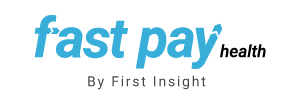Rules to Follow for Advance Beneficiary Notice of Noncoverage
/Insurance payers seem to pay eye care providers less and assign more responsibility to patients. Suppose you suspect Medicare may not cover a procedure or service for a patient.
In that case, obtain a Centers for Medicare and Medicaid Services (CMS) Advance Beneficiary Notice of Noncoverage (ABN) BEFORE providing the specified procedure or service to the patient.
Below we’ll review when, why, and how you should use an ABN form.
What is an Advance Beneficiary Notice of Noncoverage (ABN)?
An ABN is an informed consent document that informs the patient that they may be financially liable for the costs should their insurance carrier deny the claim.
The ABN allows the patient to make an “informed” decision about whether to receive the service or item and pay for it out of pocket or to decline it. Failure to obtain a signed ABN form BEFORE providing the procedure or service could result in your office being unable to bill the patient and get paid for non-covered services.
Pro Tips:
Do not continue performing the procedure until the patient signs an ABN and accepts financial responsibility for non-covered services.
Always file the signed ABN in the patient’s medical records. The ABN is invalid for any contractually obligated write-off.
Refer to the CMS Medicare Advance Written Notices of Noncoverage Booklet on the Medical Learning Network for more information about ABNs.
What’s Changed in the ABN Form?
Beginning June 30, 2023, you must use the updated Medicare Fee-for-Service (FFS) ABN CMS-R-131 form with an expiration date of 01/31/2026.
Download the current ABN form and instructions on the CMS website (Beneficiary Notices Initiative > FFS ABN). The form is available in English and Spanish.
Complying with Billing Restrictions for Patients in a QMB Program
To comply with billing restrictions for patients in a Qualified Medicare Beneficiary (QMB) program, follow the guidelines for dual-eligible beneficiaries (patients with both Medicare and Medicaid).
For dual-eligible (Medicare/Medicaid) beneficiaries, check Option Box 1 on the ABN form for a claim to be submitted for Medicare adjudication (the process of paying or denying claims). However, strike through the following words in Option Box 1 if the patient is dual-eligible: “You may ask to be paid now” and “I understand that if Medicare doesn’t pay, I am responsible for payment, but I can appeal to Medicare by following the directions on the MSN.”
Do Medicare Advantage Plans and Commercial Non-Medicare Plans Require ABNs?
The ABN is an official form for Medicare Part B. Medicare Advantage Plans, also known as MA, Medicare Part C, or Medicare replacement, usually have separate rules, and they may or may not require an ABN. Always check with the patient’s Medicare Advantage plans.
Some commercial non-Medicare plans may require healthcare providers to obtain ABNs when the insurance plan does not cover a procedure or service and when the patient is responsible for out-of-pocket expenses.
You can modify the Medicare Part B ABN form, remove the word Medicare, and replace it with the name of the Medicare insurance carrier. Most vision care plans do not require the provider to obtain an ABN but always verify.
Related: 10 Medicare and Medicare Advantage Medical Billing Dos and Don’ts
What ABN Modifiers Should You Use With the Insurance Claim?
Modifiers are added to the Healthcare Common Procedure Coding System (HCPCS) or Current Procedural Terminology (CPT®) codes to identify why a doctor or other qualified healthcare professional provided a specific service and procedure.
Payer rules for how to use modifiers vary with specific HCPCS and CPT® billing codes. Not all modifiers can be used with HCPCS or CPT® codes.
You must keep up with Local Coverage Determinations (LCD) and National Coverage Determinations (NCD) to ensure you correctly code coding claims. When you file the claim with the ABN form, append the appropriate modifier to the CPT codes.
When to Use Modifiers GA and GZ
Modifiers GA and GZ are used when a procedure or service is not reasonable and medically necessary as determined by a Medicare LCD or NCD.
Modifier GA (waiver of liability statement issued as required by payer policy, individual case): This indicates you have an ABN on file for the patient, allowing you to bill the patient if the procedure is not covered.
Modifier GZ (expect item or service denied as not reasonable and necessary): This indicates you issued an ABN for services that are not covered, and you expect Medicare to deny the payment. GZ is an informational modifier only.
When to Use Modifiers GX and GY
Modifiers GX and GY are used for items or services that are statutory exclusions (services that are never covered) from Medicare. Statutory exclusions under Medicare Part B include routine eyeglasses, eye examinations, and refractions for prescribing, fitting, or changing eyeglasses.
Modifier GX (notice of liability issued, voluntary under payer policy): Indicates you issued a voluntary ABN for services not covered because these services are statutorily excluded or are not Medicare benefits. You can use the modifier GX with the modifier GY.
Modifier GY (notice of liability not issued, not required under payer policy): You do not need the patient to sign an ABN. Use modifier GY to obtain a denial of a non-covered service. You can use the modifier GY with the GX modifier.
Related: How (and How Not) to Use Common Medical Billing Modifiers
Experience Positive ROI with a Complete Optometric Billing and RCM Solution
The Fast Pay Health optometric billing and revenue cycle management (RCM) approach is to triple-check everything so that you see a consistent return on your investment.
We know the ins and outs of working with the top vision insurance payers, and we take the time to research and analyze every process to maximize your payments—so you can focus on patient care.
Get a free practice analysis. We work with ANY eye care practice management software.
CPT® is a registered trademark of the American Medical Association®.



